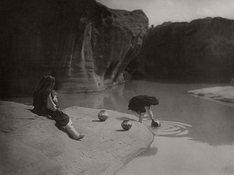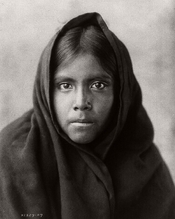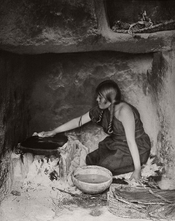Assuming that's the case. I'm not so sure whether that was accurate in Curtis' staged shots.even though the two are indistinguishable
However, we agree that these standards we do not necessarily have to impose on his work. And even if we were to do so, there would still be the notion that Curtis attempted in many ways to capture and record cultural heritage of the people he worked with - the photographs are just one aspect of his work. There's also the audio recordings and narratives, and while the latter are complex for similar reasons as the photographs, they're a unique document of cultures that were just about to vanish, or had already done so recently.
In Curtis, we're faced very much with the question whether it's preferable to have an imperfect piece of work, or nothing at all. The answer, I think, is obvious.
Btw, as to the prints, I never realized that the difference in print quality between the earlier and later volumes of The North American Indian was so great. The later prints really are much, much less compelling.









